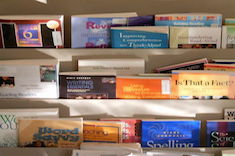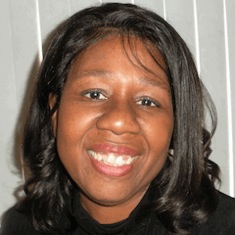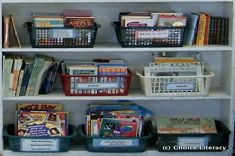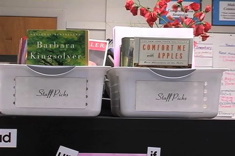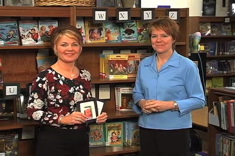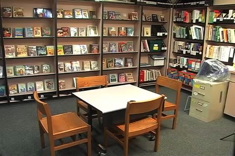Almost everything about Emily’s new coaching position was perfect. The school was one of those charming, old, traditional brick buildings with lots of character: high ceilings, hardwood floors, wide corridors, built-in bookshelves, and lots of closets. The teachers were friendly and eager for Emily’s support. The principal was smart and collaborative. Best of all, Emily got a full classroom for her office. But when Emily asked about the professional library, this is what she was shown:
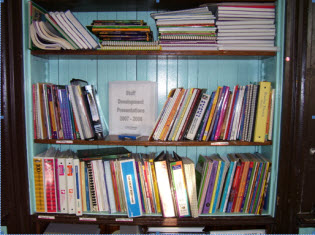
The professional library was a rag-tag collection of teacher’s editions from current and discarded reading and language art series, current and old district curriculum guides, outdated undergraduate teacher education textbooks, and a handful of current professional books. Poor Emily was crestfallen! However, this was the perfect coaching position. So Emily inventoried the collection and took her inventory with her to the next scheduled meeting with the principal.
Emily explained that a professional library is heart of professional development in a school. She made a compelling case and the principal rewarded her with $500 to start building a professional library and a promise to put in a regular line in the budget for professional books. She was initially excited about getting $500, but quickly learned that it didn’t go very far. Emily worked on maximizing her dollars and developed a plan for future spending.
The first thing that Emily did was what teachers do best, beg. She put out a call for professional books. In her own library at home, she had multiple editions of several books. She knew that she had hung on to those books for some reason. Emily brought in earlier editions of Phonics They Use: Words for Reading and Writing (Cunningham), Words Their Way: Word Study for Phonics, Vocabulary, and Spelling Instruction
(Bear, et al.), In the Middle: New Understanding About Writing, Reading, and Learning
(Atwell) and Craft Lessons
(Fletcher). Her thinking was the earlier editions were better than nothing. When more funds were available, she would replace them with the most current editions. Emily got a few more books from the faculty and a much bigger pile from the coaches in her network who were willing to part with some of the earlier editions of their books. The donation drive netted 22 additional usable books.
Then Emily was ready to make a plan for spending the money. She predicted that her $500 could bring in as many as 20 more books if she spent the money carefully. She surveyed the teachers. With such limited resources, she wanted to make sure that she got books that they would actually use. Her short survey asked:
- What is your greatest literacy instructional challenge?
- Which literacy practices are you interested in learning more about or trying?
- Is there a professional book that you’d like to read?
Emily distributed her survey at the end of a regular faculty meeting. She brought out muffins to tempt people to stay long enough to complete the survey. She got almost 100% completion of the survey (The P.E. teacher took a pass on the survey, but grabbed a muffin on the way out).
The survey revealed that the teachers were challenged by classroom management during small group reading instruction, struggling readers and writers, spelling, vocabulary instruction, and preparing for standardized tests. Emily added the following books to her list: Literacy Work Stations: Making Centers Work (Diller, 2003), Supporting Struggling Readers and Writers: Strategies for Classroom Intervention, 3-6
(Strickland, Ganske, Monroe, 2002), Bringing Words to Life: Robust Vocabulary Instruction
(Beck, McKeown & Kucan, 2002) and A Teacher’s Guide to Standardized Reading Tests: Knowledge is Power
(Calkins, Montgomery, Santman, 1998).
The survey showed that teachers were interested in learning more about literature circles, guided reading, interactive word study, the Daily Five, comprehension strategy instruction, some alternatives to book reports, and reading and writing across the curriculum. Emily added three more books to her list: Guided Reading: Good First Teaching for All Children (Fountas & Pinnell, 1996) The Daily Five: Fostering Literacy Independence in the Elementary Grades
(Boushey & Moser, 2006) and Literature Circles: Voice and Choice in Book Clubs & Reading Groups
(Daniels, 2001). The other topics were addressed in books that were donated to the library.
Many teachers responded to the survey question, “Is there a professional book that you would like to read?” with comments like, “Who has time to read?” However, a few teachers listed titles including Strategies That Work: Teaching Comprehension for Understanding and Engagement (Harvey and Goudvis, 2007), Reading With Meaning: Teaching Comprehension in the Primary Grades
(Miller, 2002), and Boy Writers: Reclaiming Their Voices
(Fletcher, 2007). Emily decided that she would definitely buy the titles that the teachers listed because so few of them gave her titles. They should be rewarded.
Emily also considered what she had learned about the school, the teachers, the students, and the school district. The school is a K-5 building with a predominately Latino student population. Many of the students were English language learners. She decided the library needed some books about teaching reading to English language learners. She put Ladybugs, Tornadoes, and Swirling Galaxies: English Language Learners Discover Their World Through Inquiry (Buhrow & Garcia) and
and
(Parker & Pardini) on her list.
The school had a core reading textbook program. However, many of the teachers were moving away from complete reliance on the textbook after discovering that it did not completely meet the needs of all of their students. Some teachers were experimenting with reading workshop. Others were using literature circles. Most of the teachers in the primary grades were using leveled books. The “guided reading bible” was already on the list along with a book on literature circles. She added The Reading Workshop: Creating Space for Readers (Serafini, 2001) to the list.
The school district had recently instituted writing workshops for all classrooms. Some teachers were religiously following the units of study. Many of them delivered their mini-lessons following the script from the guide book word for word. Wouldn’t they like to read Lucy Calkins’ original book, The Art of Teaching Writing? Maybe a couple of teachers would be interested in reading one of the seminal books on writing, Writing: Teachers & Children at Work
by Donald Graves. It’s an older title. She should be able to get a used copy for a good price. Maybe some teachers would like to develop their own units of study in writing of their very own. She put Study Driven: A Framework for Planning Units of Study in the Writing Workshop
(Ray, 2006) on the list.
Finally, Emily thought that she needed to take care of herself, too. All of the coaches in her network raved about Jennifer Allen’s book, Becoming a Literacy Leader: Supporting Learning And Change (2006). Emily added it to the list.
Now Emily was ready to shop! There were 17 books on her list. That gave her about $29 per book. She was sure that she could be able to get everything on her list. The first place that she looked was the used books links on Amazon. That was a big disappointment. There was little difference between the new and used prices for most of the books. After the shipping cost was added, there was virtually no difference. Someone recommended the website Alibris.com. This site had great prices on many of the books on the list and discounted shipping for volume orders. Emily used her teacher discount card at the super bookstores during teacher appreciation week. Finally, she contacted the local book representative for many of the professional book publishers, and she also gave Emily a discount.
The professional library went from 5 to 45 professional books. There was a little money left for book pockets and cards and some nice little touches for the room. Emily was absolutely delighted with the new professional library. She hosted an open house and was even more delighted when about a quarter of the books were checked out by the teachers. After the open house, Emily immediately got busy planning future acquisitions for the professional library — some videos, some professional journals, mentor texts for writing and reading . . .

